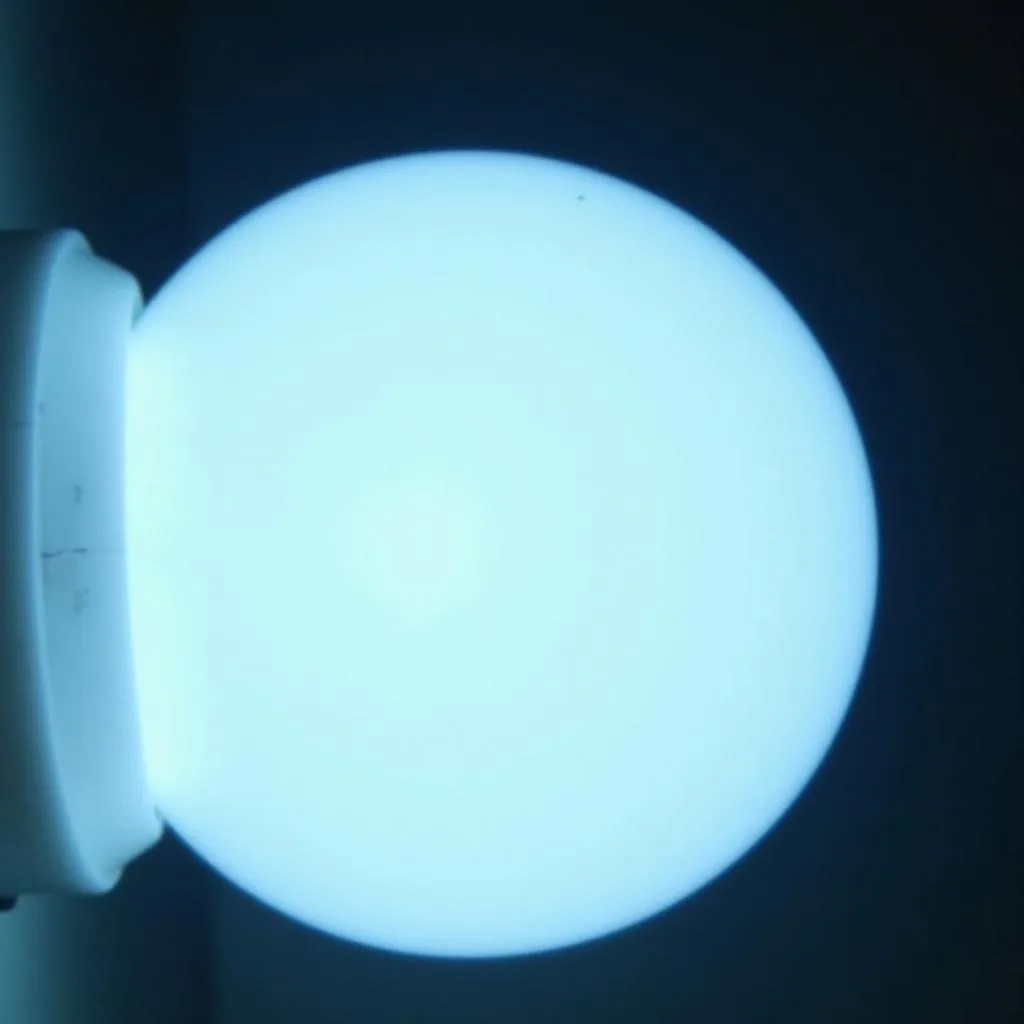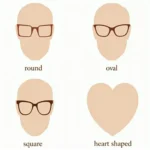Fluorescent isn’t technically a color in the traditional sense. Instead of reflecting light like typical colors, fluorescence describes a process where a material absorbs light and then emits it at a different wavelength, often appearing to “glow.” Let’s delve into what makes fluorescence unique and how it differs from standard colors.
How We Perceive Color
We see the world around us because objects reflect light. This reflected light enters our eyes, and our brains interpret it as color. For example, a ripe strawberry absorbs most colors in the light spectrum but reflects red wavelengths, hence why we perceive it as red.
The Intriguing Phenomenon of Fluorescence
Fluorescence operates differently. When a fluorescent material absorbs light, its electrons become excited and jump to higher energy levels. As these electrons return to their original state, they release energy in the form of light. This emitted light often has a longer wavelength than the absorbed light, causing the material to appear to glow, often with remarkable intensity.
Fluorescent vs. Regular Colors: Key Differences
Here’s a breakdown of the fundamental differences:
- Light Source Dependence: Fluorescent materials require an external light source to emit their characteristic glow. Remove the source, and the fluorescence disappears. Regular colors, however, remain visible as long as there’s some ambient light.
- Wavelength Shift: The emitted light from fluorescent materials is typically of a longer wavelength than the light it absorbed. This shift is why fluorescent colors often appear incredibly vibrant.
- Color Gamut Expansion: Fluorescent colors can go beyond the traditional color spectrum visible to the human eye. They can create hues we don’t typically encounter in nature, further enhancing their visual impact.
 Fluorescent Light Bulb
Fluorescent Light Bulb
Everyday Examples of Fluorescence
Fluorescence is more common than you might think. Here are a few examples:
- Blacklights: These lamps emit ultraviolet (UV) light, invisible to the naked eye. However, when this UV light hits certain fluorescent materials, they emit visible light, causing them to glow brightly in the dark.
- High-Visibility Clothing: Safety vests and signs often use fluorescent materials to stand out, especially in low-light conditions.
- Fluorescent Markers: The ink in these markers contains fluorescent dyes that absorb light and re-emit it more intensely, making your highlights pop on the page.
The Role of Black Lights
Blacklights play a crucial role in revealing the magic of fluorescence. To understand why, let’s remember that fluorescent materials need to absorb light of a specific wavelength to glow. Blacklights emit ultraviolet (UV) light, which is invisible to our eyes. When UV light hits a fluorescent object, it causes the object to emit visible light, making it seemingly glow in the dark.
If you’re curious about the color of blacklight itself, you can delve deeper into the fascinating world of light wavelengths. To learn more about blacklights and their applications, explore our article on “what color is a black light“.
Fluorescence and Color Perception
While fluorescence itself isn’t a color in the traditional sense, it undeniably influences how we perceive and experience color. Its ability to create vibrant, glowing hues adds another dimension to our visual world, making it a captivating phenomenon that continues to fascinate scientists and artists alike.
 Vibrant Fluorescent Paint Splashes
Vibrant Fluorescent Paint Splashes
“Fluorescence offers a unique opportunity to push the boundaries of color in design,” says renowned color specialist, Dr. Anya Sharma. “By incorporating fluorescent elements, we can evoke a sense of energy, vibrancy, and even otherworldliness in a space.”
Conclusion
So, is fluorescent a color? It’s more accurate to describe it as a captivating process that creates the illusion of color through the emission of light. Fluorescence adds a layer of complexity and excitement to our understanding of color, reminding us that the world is full of wonders waiting to be discovered.
FAQs
1. Can any material be fluorescent?
Not all materials exhibit fluorescence. The ability to fluoresce depends on the specific molecular structure of a substance.
2. What is the difference between fluorescence and phosphorescence?
Both involve light emission, but phosphorescence persists for a longer duration even after the light source is removed, while fluorescence ceases immediately. Think of glow-in-the-dark stars as an example of phosphorescence.
3. Are fluorescent colors used in art?
Absolutely! Artists utilize fluorescent paints and pigments to create eye-catching effects and explore new possibilities in color expression.
4. Is fluorescence harmful?
While high levels of UV light can be harmful, the levels used in everyday applications of fluorescence, such as markers or clothing, are generally considered safe.
5. How are fluorescent lights different from regular light bulbs?
Fluorescent lights use a gas discharge and fluorescent coating to produce light, making them more energy-efficient than traditional incandescent bulbs.
We encourage you to continue exploring the fascinating world of color and light. For further reading, check out our articles on “what color grow lights for seedlings” and “what colors make you look skinny“.
Do you have other questions about color, design, or how to create a space that truly reflects your personality? Don’t hesitate to contact us. Our team at Color Box Hanoi is here to guide you on your journey to a more vibrant and inspiring living environment. Call us at 0373298888, email us at [email protected], or visit us at 86 Cầu Giấy, Hà Nội. Our customer care team is available 24/7 to assist you.
